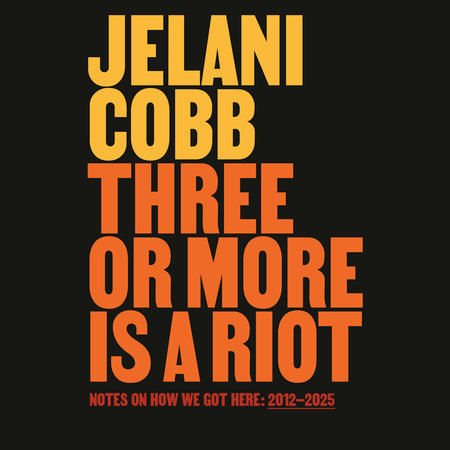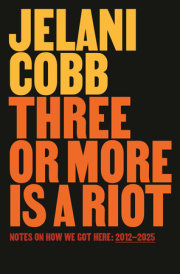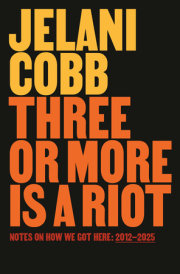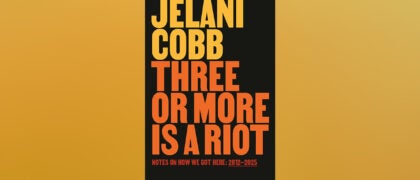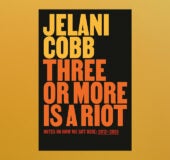IThe Parameters of HopeEras have a way of defining themselves. We navigate the random scroll of life and world affairs until we happen upon those singular occurrences that seem to put everything else into the proper context, highlighting the patterns in what had previously seemed to be arbitrary events. It’s easier to see these patterns in retrospect, which is part of what makes history indispensable to understanding current events. Sifting through the work I produced between 2012 and 2016, I saw the relationships between various topics, and certainly my impressions of them, begin to emerge. Even the obituary columns I wrote in those years—for Ruby Dee, Amiri Baraka, Nelson Mandela, and David Carr—added to this perception, if only because each of that disparate lot had, at some point, seemed to be a fixture in the world that was. Their transitions marked, among other things, the point at which that landscape was irrevocably altered, and we were left to ponder the questions confronting us sans their unique insights. If the first four years of Barack Obama’s presidency had been defined by idealistic aspirations and the heady afterglow of achieving a racial landmark, the second term required us to come to terms—in realistic sobriety—with what it actually meant for a black man to be president of the United States. We’d moved from the dawn of a new day to the harsh daylight of high noon, and the growing fissures in American society were becoming more visible. The period coincided with other developments, like the emergence of social media as a force in human communications. The naïve early perspective looked at the Obama campaign’s shrewd use of Facebook in the 2008 election and the 2011 Arab Spring uprisings and saw a force for democratizing the world. By the second term, though, we had begun to recognize that the picture was far more complex than we might’ve suspected. Were these new platforms better suited to demagoguery than democracy?
I spent much of these years on the road, exploring our new American landscape with all its contradictions. The era was seeking to define itself and I wanted to be out there to witness it.
Trayvon Martin and the Parameters of HopeMarch 21, 2012Were the elements of the Trayvon Martin story—the plaintive cry for help punctuated by a gunshot; the image of Martin, seventeen and looking young for his age, in a football jersey; the iced tea and Skittles he carried—not so indelible, the events would seem like something from a Tom Wolfe novel: in a presidential election year, an unarmed black teen is shot by a Hispanic man in a county the African American president narrowly lost, in a state that accounts for twenty-nine electoral votes, resulting in demands that the attorney general (also black) open an investigation. The miasma of racism in this storyline is compounded by a police department’s refusal to make an arrest, gun laws that confuse jurisprudence with football and suggest that a good offense is now the equivalent of self-defense, and wild rumors of a black militia preparing to occupy the town and take the shooter into custody. That Al Sharpton will be covering a planned rally rather than leading it is perhaps an irony too far even for Wolfe. More than that, the case, like similar ones, highlights the complicated matter of expectations and a black presidency. Call it the parameters of hope.
In August 2008, at the point in his presidential campaign where his political support had nearly morphed into messianic fervor, Barack Obama delivered a speech in St. Petersburg, Florida, touting his economic stimulus plan. That Obama was heckled during the speech was surprising enough; that he was heckled by a group of black protesters holding a sign that read “What about the Black community, Obama?” seemed, at first glance, to verge upon the surreal. Or maybe not; four months earlier, black activists had grumbled when he released a tepid statement calling for calm after a jury acquitted three New York Police Department detectives who fatally shot Sean Bell (unarmed, black, male) on the eve of his wedding. Yet earlier in his campaign, Jesse Jackson had criticized Obama for refusing to comment upon or participate in rallies surrounding the Jena Six—young men (black) who were arrested and initially charged with attempted murder after a fight in school. That banner in Florida pointed to a mild but noteworthy backlash against Obama’s effort to remain above the racial fray. Its question, particularly as it pertains to cases involving young men and law enforcement, was subsumed by the vast significance of the 2008 election but has bobbed to the surface with semi-regularity during his presidency. It is present again in the case of Trayvon Martin, a seventeen-year-old shot dead in Florida.
During the 2008 campaign season Barack Obama made a habit of substituting cynicism for racism in his rhetoric. Suspicions that the country would never elect a black president weren’t racist, he would imply; they were cynical. His opponents’ worst slanderings of his background, religion, and patriotism were not race-baiting; they were cynical attempts to mislead the public. Yet incidents like the Bell shooting inspired a kind of split-screen effect, with one side featuring the meteoric ascent of a black presidential candidate and the other replaying a wretched but familiar scene of excessive police force directed at a black male victim. Thus there was a tincture of cynicism infecting even the most triumphal moment in the nation’s recent history.
If his historic levels of support with black voters in 2008 offered, in response to persistent questions from the press, a declarative statement—Barack Obama is black enough—subsequent events slyly turned it interrogative: Barack Obama: Is black enough? Amid the collective self-congratulation that surrounded the election, separate police shootings of unarmed black men in New Orleans, Texas, and Oakland during the same month as Obama’s inauguration were scarcely noticed. In the most widely discussed of the incidents, Oscar Grant was shot while lying face down in an Oakland BART station by a police officer who claimed to have accidentally pulled his gun when he was reaching for his Taser.
The election of a black president and appointment of a black attorney general could not realistically remedy decades of complex relations between African American men and law enforcement. The parameters of hope had already become vividly apparent in October of last year, when the state of Georgia executed Troy Davis despite serious questions about his guilt. Some quarters of black (and white) America demanded, or at least hoped for, some type of presidential intervention—even though, under the law, there was no clear route into a state case for Obama.
In this context, the shooting death of Trayvon Martin (black, male, seventeen, unarmed save for a packet of candy and a bottle of iced tea) did not so much raise questions as it confirmed suspicions: that we remain stratified or at best striated by race, that “innocent” is a relative term, that black male lives can end under capricious circumstances, and that justice is in the eye of the beholder—ideas that are as cynical as they are applicable. At this juncture, events in Sanford, Florida, suggest the benefit of the doubt in the shooting of a black teenager extends even to unauthorized, untrained, weapon-toting private citizens who pursue unarmed pedestrians.
That the Justice Department announced a probe and a grand jury has been convened is likely a result of the outrage seething across multiple social media platforms, television, and traditional corporeal protesting. Yet the failure of the Sanford Police Department to make an arrest nearly a month after Martin’s death, and the fact that, if it weren’t for half a million petition signatures and national outrage, this shooting would have gone un-investigated, has already confirmed yet another assumption: our worst problem is not cynicism; it’s the frequency with which that cynicism proves accurate.
Copyright © 2025 by Jelani Cobb. All rights reserved. No part of this excerpt may be reproduced or reprinted without permission in writing from the publisher.

